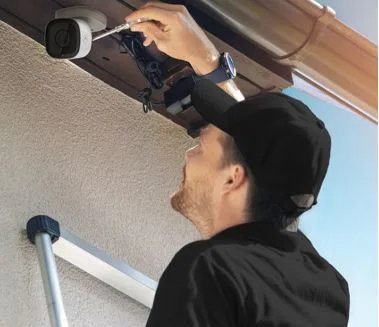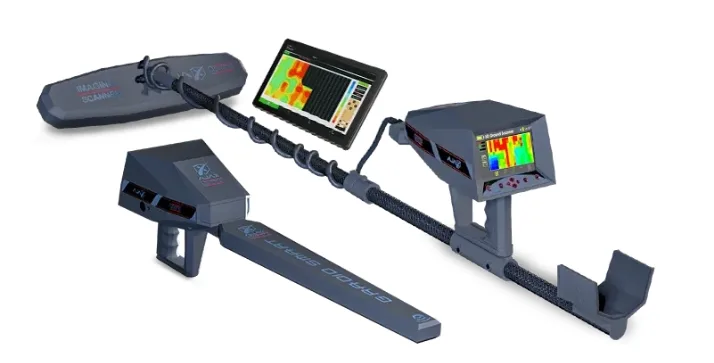Akron’s Automated Oasis: Where Innovation Meets Intuition at Home
The Dawn of Connected Living in Akron
Akron, a city known for its innovation and forward-thinking spirit, is increasingly embracing the future of residential technology. At the heart of this transformation lies the smart home system Akron, a sophisticated network of interconnected devices designed to automate and optimize your living environment. Imagine a home that anticipates your needs, responds to your commands, and effortlessly manages its own operations, all while enhancing your comfort and peace of mind. This isn’t a futuristic fantasy; it’s the present reality for homeowners who choose to integrate these intelligent solutions into their lives. From climate control that adapts to your daily routine to lighting that sets the perfect ambiance with a single voice command, the possibilities are virtually limitless. The integration of these systems not only elevates the convenience factor but also significantly contributes to a more secure and energy-efficient household, aligning perfectly with Akron’s commitment to sustainable living.
Beyond Convenience: A Symphony of Benefits
While the immediate allure of a smart home often centers on its convenience, the deeper benefits extend far beyond simply automating tasks. A well-designed smart home system acts as a central nervous system for your residence, providing a holistic approach to managing your daily life.
- Enhanced Security: Integrated cameras, motion sensors, smart locks, and even doorbell cameras provide comprehensive surveillance and control, allowing you to monitor your property from anywhere in the world. Real-time alerts can notify you of unusual activity, offering an unparalleled sense of security.
- Optimized Energy Efficiency: Smart thermostats learn your preferences and adjust heating and cooling based on occupancy and external weather conditions, leading to substantial energy savings. Smart lighting can turn off automatically when rooms are empty, further reducing your carbon footprint and utility bills.
- Increased Comfort and Ambiance: Adjust lighting, temperature, and even music with simple voice commands or through intuitive apps. Create pre-set scenes for different activities, such as movie night or a quiet evening, transforming your living space instantly.
- Accessibility for All: Smart home technology can significantly improve accessibility for individuals with mobility challenges or disabilities, enabling them to control various aspects of their home with greater ease and independence.
- Property Value Enhancement: Homes equipped with modern smart technology are often more attractive to potential buyers, potentially increasing your property’s market value and appeal.
Tailoring Your Intelligent Abode
One of the most compelling aspects of smart home systems is their remarkable flexibility and scalability. There isn’t a one-size-fits-all solution; instead, these systems can be meticulously tailored to meet the unique needs and desires of each homeowner. Whether you’re a tech enthusiast eager to embrace the cutting edge or someone simply looking for a more streamlined way to manage your home, there’s a configuration that’s right for you. Considerations for customization include:
- Scope of Integration: Do you want to start with a few key devices like a smart thermostat and a couple of smart lights, or are you ready for a fully integrated system encompassing security, entertainment, and appliance control?
- Budgetary Considerations: Smart home technology offers a wide range of price points, from entry-level DIY solutions to professional-grade installations. Determine your budget early on to guide your choices.
- Future Expandability: Consider systems that are designed for future expansion, allowing you to add new devices and functionalities as your needs evolve.
- User-Friendliness: Opt for systems with intuitive interfaces and easy-to-use apps, ensuring that all members of your household can comfortably interact with the technology.
- Compatibility: Ensure that the devices and platforms you choose are compatible with each other to avoid connectivity issues and create a seamless experience.
The Core Components of a Smart Home Ecosystem
A robust smart home system is built upon a foundation of interconnected devices, each playing a crucial role in the overall functionality. Understanding these core components is key to building a system that truly meets your needs:
- Central Hub/Controller: This is the brain of your smart home, facilitating communication between all connected devices. Examples include smart speakers with integrated hubs, dedicated home automation controllers, or even advanced routers.
- Smart Lighting: From dimmable bulbs to color-changing strips, smart lighting allows for remote control, scheduling, and integration with other smart devices to create dynamic lighting scenes.
- Smart Thermostats: These intelligent devices learn your preferences, optimize energy usage, and can be controlled remotely, ensuring your home is always at the perfect temperature.
- Security Devices: This category includes smart locks, door/window sensors, motion detectors, and security cameras, all working in concert to protect your property and provide real-time alerts.
- Smart Plugs and Outlets: Transform any ordinary appliance into a smart device by plugging it into a smart outlet, allowing for remote control and scheduling.
- Voice Assistants: Devices like Amazon Alexa or Google Assistant provide a hands-free way to control your smart home devices with simple voice commands.
- Entertainment Systems: Integrate your smart home with smart TVs, sound systems, and streaming devices for a truly immersive entertainment experience.
- Appliances: Smart refrigerators, ovens, washing machines, and even coffee makers can be integrated into your system, offering remote control and enhanced functionality.
Professional Installation vs. DIY: A Balanced Perspective
The decision to opt for professional installation or a do-it-yourself approach for your smart home system in Akron depends on several factors, including your technical expertise, time commitment, and the complexity of the desired system. Both avenues offer distinct advantages.
Professional installation ensures that your system is set up correctly, optimized for performance, and integrated seamlessly. Installers possess the expertise to troubleshoot potential issues, recommend the best products for your specific needs, and provide ongoing support. This can be particularly beneficial for larger, more intricate systems or for those who prefer a hands-off approach.
On the other hand, the DIY route offers a more cost-effective entry point and allows for a hands-on learning experience. Many smart home devices are designed for easy setup and can be installed by homeowners with basic technical skills. This option is ideal for those who enjoy tinkering with technology and prefer to have complete control over their system’s configuration. However, it’s crucial to thoroughly research compatibility and follow instructions carefully to avoid potential frustrations.
Navigating the Future: Trends in Smart Home Technology
The smart home landscape is constantly evolving, with new innovations emerging at a rapid pace. Staying abreast of these trends can help you make informed decisions when investing in your smart home system. Some key trends shaping the future of connected living include:
- Increased Focus on AI and Machine Learning: Smart home systems are becoming even more intelligent, utilizing AI to learn user habits, predict needs, and automate tasks with greater precision. This includes predictive maintenance for appliances and personalized environmental control.
- Enhanced Interoperability: The industry is moving towards greater standardization, allowing devices from different manufacturers to communicate more seamlessly. This will reduce compatibility headaches and offer greater flexibility in system design.
- Emphasis on Health and Wellness: Smart home technology is increasingly being used to monitor air quality, sleep patterns, and even provide reminders for medication, contributing to overall well-being.
- Sustainable Living Solutions: As environmental consciousness grows, smart homes will play an even larger role in promoting energy efficiency, waste reduction, and responsible resource management through advanced monitoring and automation.
- Edge Computing and Data Privacy: More processing is being done locally on devices (edge computing) rather than solely in the cloud, enhancing speed and offering greater control over personal data and privacy.
Conclusion: Akron’s Smart Evolution
The integration of a smart home system in Akron represents more than just a technological upgrade; it signifies a fundamental shift towards a more efficient, secure, and enjoyable way of life. From the quiet convenience of automated lighting to the robust protection of advanced security features, these systems empower homeowners to exert unparalleled control over their living environments. As Akron continues to grow and innovate, so too will the adoption of these intelligent solutions, further cementing the city’s reputation as a hub of progress. The future of residential living is undoubtedly smart, and for Akron residents, that future is now. For more insights into the broader technological landscape, consider exploring the latest developments in artificial intelligence.
FAQ’s about Smart Home Systems in Akron
What is the average cost of installing a smart home system in Akron?
The cost of a smart home system in Akron can vary widely depending on the scope and complexity of the installation. A basic setup with a few devices might range from a few hundred dollars, while a comprehensive, professionally installed system can cost several thousand. Factors like the number of devices, brand choice, and whether you opt for DIY or professional installation will influence the final price.
Are smart home systems secure from hacking?
Reputable smart home systems incorporate robust security measures, including encryption, multi-factor authentication, and regular software updates, to protect against cyber threats. However, no system is entirely impervious. It’s crucial for users to maintain strong, unique passwords, enable all available security features, and keep their device software up to date to minimize risks.
Can I integrate my existing smart devices into a new system?
The ability to integrate existing smart devices into a new system depends on the compatibility of the devices and the chosen smart home platform. Many platforms support a wide range of popular brands and communication protocols (like Wi-Fi, Z-Wave, Zigbee). It’s always advisable to check compatibility before purchasing new components to ensure a seamless integration.
What are the common benefits of a smart home for energy efficiency?
Smart homes significantly contribute to energy efficiency through features like smart thermostats that optimize heating and cooling based on occupancy and schedules, smart lighting that turns off when rooms are empty, and smart plugs that can power down idle electronics. These features reduce wasted energy, leading to lower utility bills and a smaller carbon footprint.
Do I need fast internet for a smart home system to work effectively?
While a reliable internet connection is crucial for the optimal performance of most smart home systems, it doesn’t necessarily need to be exceptionally fast. A stable broadband connection is generally sufficient for most smart home functions, as the data transfer for individual devices is relatively small. However, for streaming high-resolution video from security cameras or frequently downloading large updates, a faster connection would be beneficial.




